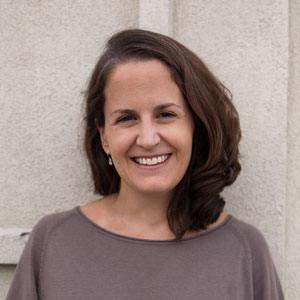
“Charlie, don’t you get it?…[you’re] sweet and everything, but it’s like you’re not even there sometimes. It’s great that you can listen and be a shoulder to someone, but…You can’t just sit there and put everybody’s lives ahead of yours and think that counts as love… I want to know where you are, what you need, and what you want to do.” Stephen Chbosky, the perks of being a wallflower
Jenna first came to see me when she was discharged from the hospital after attempting suicide. She had left several notes for family members and friends. Each note was an expression of her love, her happy memories, and her hopes for the person to whom she was writing,— words of encouragement, guidance, and affirmation. About her suicide, she wrote only that it was her time to go and that the person should be happy for her because she would be in heaven. But Jenna herself was eerily absent from the writing.
As I spent time with Jenna in sessions, she revealed an extensive history of her role as “the care-taker,” “the loving listener,” “the strong one,” “the perfect daughter, sister, friend, girlfriend, student, church member, co-worker…” She had been a “vessel for God” to the degree that she seemed to be missing. The fact that she had survived (miraculously) her suicide attempt landed Jenna in a full-blown identity crisis. When trying to describe the process of her therapy and healing, she used the image of tearing down a building and starting from scratch,— deciding what to keep, what to leave behind, what to add in the rebuilding,— very scary, as all of her significant relationships had depended on her previous “self.” People needed Jenna. They counted on her constant smile and easy-going nature. They looked to her for comfort and advice.
Jenna began to risk changes. She took time to pay attention to herself and to acknowledge what she called her “darker side,”— all of the feelings and needs she’d disowned in order to be strong for other people. At first, Jenna found that she could not be present to herself without withdrawing from others; she needed space to figure out what was going on inside her. Sometimes, she used body signals to clue her into feelings— a sick sensation in her stomach, pressure behind her eyes or in her throat, tight muscles. Dance class was a safe place for Jenna to explore emotions; she described one significant experience in these words: “One day, my modern teacher gave us a simple combination to make our own. I dared to dance the anger brewing in me that day. Although I imagined my movement looked convulsive and ugly, I didn’t care; it felt great to release my frustrations. The following week, my teacher asked me to perform a piece with her company. When I gave her the stunned ‘why me’ look, she explained, ‘I couldn’t keep my eyes off you last week.’ The best part was that she had invited the real me— dark side and all.” As Jenna allowed anger, sadness, confusion, loneliness, fear, need, and exhaustion to be real parts of her, she felt “more connected to the world, not separate in a perfect bubble.”
Some of the most courageous risks Jenna took in her relationships involved saying no, disappointing people, being honest, allowing discomfort and conflict, not seeking immediate resolution by editing herself to please others. One day, when I invited her to express what she needed in the therapy process, Jenna replied, “Sometimes I just need to ‘be broken’ with you without trying to work through it.” She came to define “a good day” not as one when she successfully kept everyone happy and felt happy herself but as one when she felt “real and fully present.” True self-confidence became no longer about being in control, in charge of crises, or able to take care of people while remaining “all together;” rather, Jenna began to value the strength it took to be connected to herself and clear about who she was in a system that often expected her to continue sacrificing truth to keep the peace. She confronted her fear of being a burden if she were to ask for help, and she allowed herself to receive support. Even her natural gift for listening and loving others in their pain was enhanced by these changes; she related to people more deeply out of empathy and compassion, less with pity and offers of wisdom. And she learned to honor the idea that gifts need boundaries.
Accepting her suicide attempt,— really knowing it as part of her history,— was perhaps the most difficult aspect and final hurdle of Jenna’s healing. Her memory of the experience felt surreal, dream-like, broken into disconnected images. Some connections she made through personal reflection and therapy: the idea that, when she’d no longer felt able to keep herself together and strong for others, she’d come to the conclusion that it would be better to die than to “fall apart;” the realization that her previous attempts to express pain had been soft whispers, but her suicide attempt was a “scream.” A turning point came when Jenna again used dancing to help herself heal. She decided to choreograph and perform publicly a dance that would reflect her whole journey; through movement, she felt, owned, and expressed her story.
(This client’s name has been changed to protect her identity. She has given permission for her story to be told and hopes that it may help others towards healing and greater wholeness.)
About Lynn Davies
I am a Licensed Clinical Professional Counselor with a Master of Science in Pastoral Counseling from Loyola University in Maryland. I have been in private practice for over fourteen years and have experience working with adults and adolescents, addressing a variety of issues: anxiety, depression, relationship problems, past or current trauma, eating disorders, self-mutilation, bereavement, parenting concerns, boundaries, and self-care.
- Web |
- More Posts(22)

